By German Tirado, July 30, 2025
Table of Contents
Introduction: Why the Customer Loyalty Myth Is Holding Back Your Brand’s Growth
Section 1: Why Loyalty Doesn’t Drive Growth—The Double Jeopardy Law
Section 2: The “Cheaper to Retain” Myth—and Why It’s Misleading
Section 3: Growth = Gaining Competitors’ Customers
Section 4: What Actually Drives Growth—Availability, Not Affinity
Section 5: Loyalty Programs Reward the Inevitable, Not Drive Change
Section 6: Still Tempted by Retention-Focused Strategies? Here’s the Data
Conclusion: If You Want Growth, Stop Chasing Loyalty and Start Chasing Buyers
Frequently Asked Questions (FAQs)
Works Cited
Introduction: Why the Customer Loyalty Myth Is Holding Back Your Brand’s Growth

In today’s world of hyper-targeted marketing, AI-driven personalization, and endless CRM automations, it’s tempting to believe that customer retention is the ultimate path to growth. You've heard the cliché a hundred times:
“It’s cheaper to retain a customer than to acquire a new one.”
It’s short. It’s catchy. It feels smart. But it’s wrong.
When you zoom out and look at the actual data behind brand growth, you’ll find something far less cozy but far more powerful: Brands grow by acquiring more customers, not by deepening loyalty with the ones they already have.
This matters whether you're running a SaaS platform, a B2B service like a telephone answering system, or a local internet marketing agency. It’s easy to pour budget into retention strategies, automated follow-up emails, loyalty rewards, client appreciation campaigns, but those often target people who were already going to stick around. Worse, they miss the real growth opportunity: reaching the 95% of category buyers who aren't your customers yet.
The reality is that customer churn is often uncontrollable, and that most buyers leave for reasons unrelated to your service quality, like budget cuts, staff turnover, mergers, or procurement policies. So even if you're the best solution on the market, loyalty alone won't make you grow.
In this article, we’ll break down the hard evidence from marketing science, especially from the Ehrenberg-Bass Institute, that reveals why penetration not loyalty, is the primary driver of brand growth. We'll show how customer acquisition outperforms retention in real-world business scenarios and why focusing on mental and physical availability is the most effective strategy for scaling your business.
If you’ve been told that loyalty marketing is your ticket to scaling, prepare to rethink your strategy. Whether you’re a B2B software company, a professional service provider, or a digital marketing agency, the path to sustainable growth starts by reaching more people, more often, in more buying situations.
Let’s dive into the facts.
Section 1: Why Loyalty Doesn't Drive Growth—The Double Jeopardy Law

Let’s start with a scientific truth that marketers often overlook:
Loyalty is a function of penetration.
The Ehrenberg-Bass Institute’s Double Jeopardy Law explains this simply: brands with larger market share enjoy two advantages, they have more customers, and those customers are slightly more loyal [39†The Double Jeopardy Law in B2B shows the way to grow.pdf†L10-L30].
Smaller brands, on the other hand, suffer twice:
They have fewer customers.
Their customers are also less loyal, buying less often and switching more.
In other words, you don’t get big by deepening loyalty, you get more loyalty because you got big. Growth flows from acquisition, not the other way around.
Section 2: The “Cheaper to Retain” Myth—and Why It’s Misleading

"It costs 5x more to acquire a customer than to keep one."
That’s a popular quote, attributed to every second marketing influencer on the internet. But it hides a grim reality: retention isn’t easy, or cheap.
Here’s why:
Most customer churn is outside your control, business closures, staff turnover, budget cuts, shifting needs, mergers, or internal politics.
Even your best customers will buy from competitors because they want variety or are forced to switch by procurement rules.
Retention tactics like relationship marketing, loyalty programs, and upsell campaigns often cost more than they return.
As Jenni Romaniuk noted in Brand Rejection in B2B, even brand rejection is low, only ~7–11% of B2B buyers actively reject a brand. The real issue? Most buyers simply don’t think of your brand at all [38†Brand Rejection in B2B†L10-L20].
So while retention might sound more efficient, it’s rarely effective at delivering actual growth.
Section 3: Growth = Gaining Competitors’ Customers

Still not convinced?
The Duplication of Purchase Law drives the point home:
“Your customers also buy from your competitors, and your new customers will come from theirs.”
In other words, growth comes not from “deepening relationships” with your base, but from being available to more people, more often [HBG2].
And when we say “more people,” we don’t mean targeting a niche. We mean the entire category buyer base. Data from B2B categories like insurance and banking shows that brands grow by acquiring non-loyal buyers from other brands, in proportion to competitor size [37†How do Business-to-Business (B2B) brands compete†L10-L20].
It’s not just about targeting switchers or disloyal buyers. It’s about penetrating the category as broadly as possible.
Section 4: What Actually Drives Growth:
Availability, Not Affinity

The Ehrenberg-Bass research defines two critical levers of growth:
1. Mental Availability – Being easily thought of in a buying situation
Mental availability isn’t about "brand love" or emotional bonding. It's about being recalled when a buyer thinks:
“Who do we call when our vendor flakes?”
“Which supplier works on short notice?”
“Who can scale quickly for Q4?”
These are Category Entry Points (CEPs), mental cues like when, where, while, why, with/for whom, and how I’m feeling [40†Category Entry Points in a Business-to-Business (B2B) world†L10-L40].
2. Physical Availability – Being easy to find, try, and buy
This means:
Broad geographic access
Easy-to-navigate websites
Flexible contracts
Quick onboarding
Strong brands do both. Weak brands fixate on CRM workflows and newsletters while missing the bulk of the market.
Section 6: Still Tempted by Retention-Focused Strategies? Here’s the Data.

Insight
Evidence
Only 7–11% of B2B buyers actively reject a brand
[38†Brand Rejection in B2B†L10-L20]
Most “defections” are due to external, unfixable factors
[38†Brand Rejection in B2B†L30-L40]
Bigger brands enjoy more loyalty as a byproduct of scale
[39†The Double Jeopardy Law in B2B†L10-L30]
CEPs reduce probability of defection by ~5% per additional memory cue
[40†Category Entry Points in a B2B world†L60-L80]
Brands grow by acquiring new buyers, not squeezing old ones
[HBG1], [HBG2]
Conclusion: If You Want Growth, Stop Chasing Loyalty and Start Chasing Buyers
Many marketers and business leaders cling to the belief that loyalty drives growth, that if we just treat our customers right, they'll stick around forever, buy more often, and refer others. But the evidence is clear, consistent, and global:
Real brand growth comes from acquiring more customers, not from loyalty programs, retention workflows, or emotional engagement campaigns.
That doesn’t mean loyalty is meaningless. It just means it’s not something you can engineer directly. Loyalty is a byproduct of brand scale, not a lever to generate it. Bigger brands naturally have more repeat customers, not because they’ve mastered loyalty strategies, but because they have more customers overall [HBG1]; [HBG2].
If your business, whether it's a B2B SaaS platform, internet marketing service, or AI-powered telephone answering company, wants to grow, your marketing strategy must prioritize:
Customer Acquisition
Reaching new category buyers through broad-reach campaigns that cut across demographics, industries, and buyer states (both in-market and out-of-market).
Mental Availability
Building memory structures tied to Category Entry Points (CEPs), the real-world situations where your brand should come to mind (e.g., “when I need a fast response,” “when my current vendor drops the ball,” “when switching tools during budget season”) [40†Category Entry Points in a B2B world†L10-L80].
Physical Availability
Making your business easy to discover, compare, try, and buy. This includes having a strong presence on search engines, digital marketplaces, business directories, and fast onboarding systems, especially in categories where buyers want speed and convenience.
Too many marketing teams focus their budgets on retention campaigns aimed at a small fraction of their base, people who were likely to buy again anyway. Meanwhile, they ignore the much larger population of buyers who don’t yet think of them, or worse, don’t even know they exist.
So here’s the hard but liberating truth:
You can’t control churn, but you can control reach.
You can’t program loyalty, but you can build mental salience.
You don’t need to win hearts, you need to win memory and access.
By redirecting your efforts toward customer acquisition, and by building and refreshing memory links tied to real buying situations, your brand becomes the one that more people choose, not just once, but again and again.
In a noisy market where attention is scarce and switching is easy, the winners will be those who invest in being easily thought of and easy to buy. If you're still treating retention as your core growth engine, it's time to change gears.
Frequently Asked Questions (FAQs)
Q1: Is it really more expensive to acquire a new customer than to retain an existing one?
While acquisition costs can seem higher upfront, the idea that “retention is always cheaper” is misleading. Most churn is due to factors outside your control, such as budget changes, leadership turnover, or category churn. And retention efforts like loyalty programs often cost more than they return. In contrast, customer acquisition fuels real growth by expanding your brand's buyer base [HBG1]; [HBG2].
Q2: What is the Double Jeopardy Law in marketing?
The Double Jeopardy Law shows that bigger brands have more customers and those customers are slightly more loyal. Smaller brands have fewer customers and lower loyalty. This means loyalty is an outcome of scale, not a growth driver. To grow, brands need to focus on increasing penetration through broad-reach marketing strategies [39†The Double Jeopardy Law in B2B†L10-L30].
Q3: Should I stop all loyalty or retention marketing?
Not entirely. Retention has value, especially when tied to mental availability building through Category Entry Points (CEPs). But if your growth plan relies solely on upsells, email sequences, or VIP tiers for existing customers, you’re aiming too small. Shift more budget toward customer acquisition campaigns that grow reach and brand salience [40†Category Entry Points in a B2B world†L10-L80].
Q4: How can I grow my business through customer acquisition?
Focus on:
Mental Availability: Build memory structures tied to when, where, why, and how people buy in your category (Category Entry Points).
Physical Availability: Make your brand easy to find, try, and buy—across digital and physical touchpoints.
Broad Reach Media: Use paid ads, social media, and SEO to target the whole market, not just in-market or lookalike segments.
Q5: What are Category Entry Points (CEPs)?
CEPs are the real-world situations, triggers, and needs that cause buyers to enter a category and start thinking about which brand to choose. Examples include:
“When my current provider fails.”
“When I’m scaling my team.”
“When I need fast support.”
Building memory links between your brand and these entry points improves the chance you’ll be recalled, and bought when buyers become active [40†Category Entry Points in a B2B world†L10-L80].
Q6: How does this apply to service businesses like internet marketing or telephone answering services?
Services often face high churn and low loyalty, not due to poor performance, but because clients frequently reassess providers. That makes customer acquisition even more critical. Growing your mental availability in buying situations like “When my current agency isn’t delivering” or “When we need better lead response times” can drive more leads and sales than retention campaigns ever will.
Q7: Does brand purpose or emotional connection help retention?
There’s little evidence that emotional attachment or brand purpose significantly boosts long-term loyalty. What does matter is being remembered when it counts. That comes from consistent branding, distinctive brand assets, and frequent exposure across multiple buying contexts [HBG1].
Works cited
[HBG1] Sharp, Byron. How Brands Grow: What Marketers Don’t Know. Oxford University Press, 2010.
[HBG2] Romaniuk, Jenni, and Byron Sharp. How Brands Grow Part 2: Emerging Markets, Services, Durables, New and Luxury Brands. Oxford University Press, 2015.
[37†How do Business-to-Business (B2B) brands compete†L10-L40]
Romaniuk, Jenni. How Do Business-to-Business (B2B) Brands Compete? Ehrenberg-Bass Institute for Marketing Science, July 2022.
[38†Brand Rejection in B2B†L10-L40]
Romaniuk, Jenni. Brand Rejection in B2B: Incidence, Reasons and Implications. Ehrenberg-Bass Institute for Marketing Science, July 2022.
[39†The Double Jeopardy Law in B2B shows the way to grow.pdf†L10-L30]
Romaniuk, Jenni. The Double Jeopardy Law in B2B Shows the Way to Grow. Ehrenberg-Bass Institute for Marketing Science, July 2022.
[40†Category Entry Points in a Business-to-Business (B2B) world†L10-L80]
Romaniuk, Jenni. Category Entry Points in a Business-to-Business (B2B) World. Ehrenberg-Bass Institute for Marketing Science, July 2022.
Address
Phone: 725-240-6870
Email : [email protected]
Address : 6440 Sky Pointe Dr. #140-341 Las Vegas, NV 89131
Artificial Intelligence
Marketing & Branding
Marketing & Branding
©2025 Max Digital Edge | All Rights Reserved
